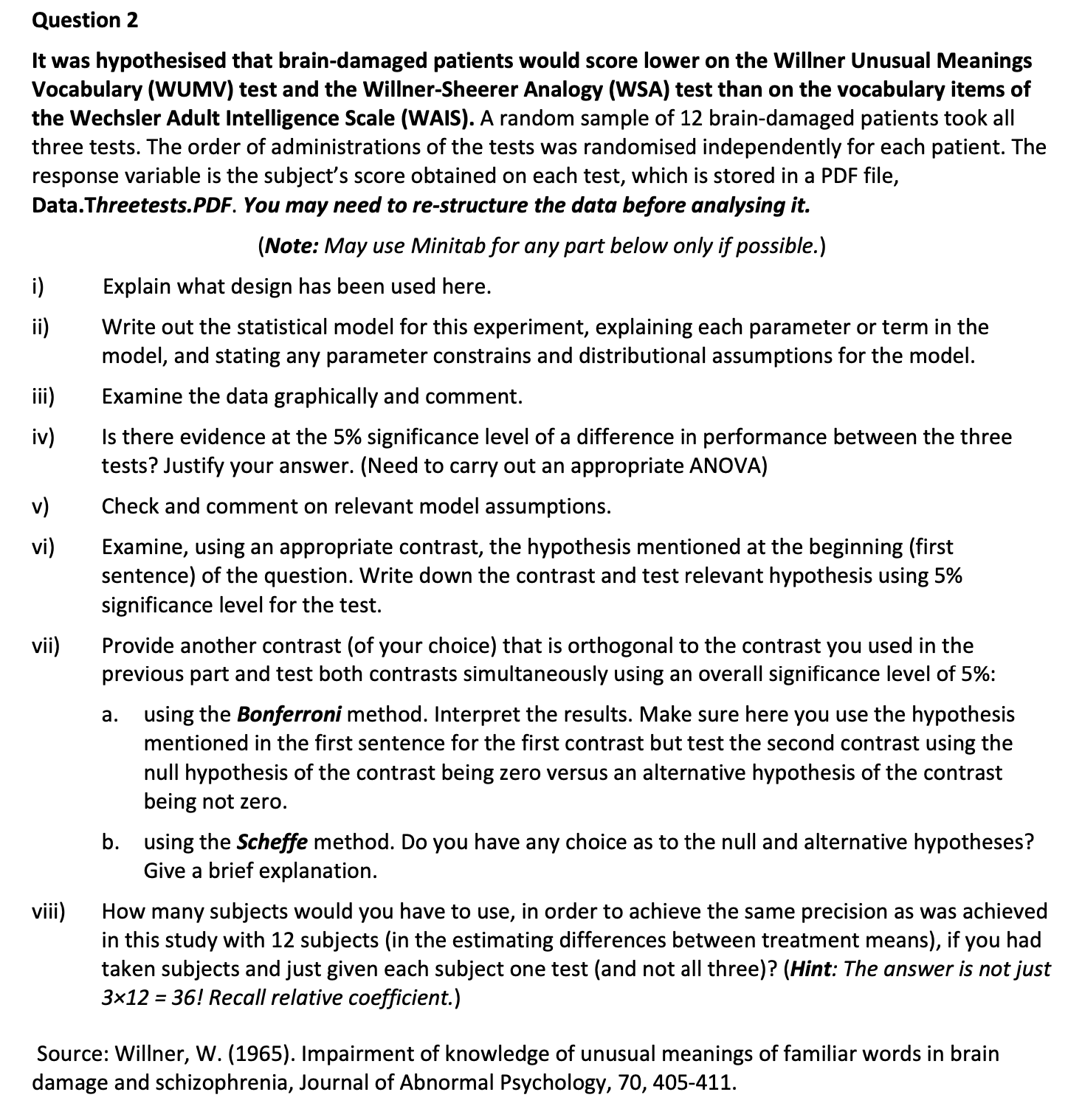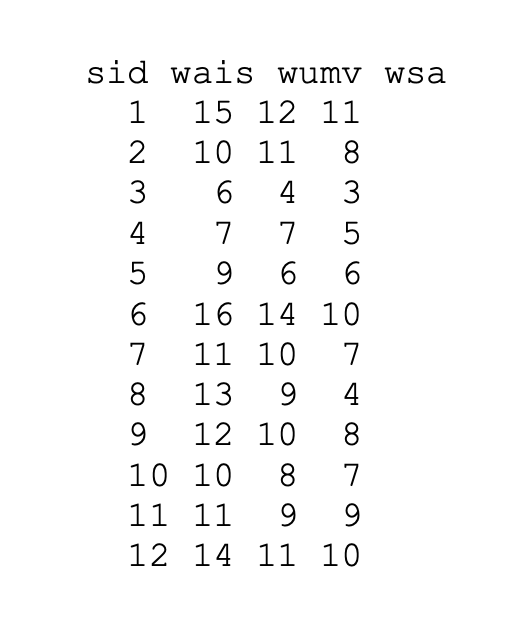Hi i need help with these questions
Question 2 It was hypothesised that brain-damaged patients would score lower on the Willner Unusual Meanings Vocabulary (WUMV) test and the Willner-Sheerer Analogy (WSA) test than on the vocabulary items of the Wechsler Adult Intelligence Scale (WAIS). A random sample of 12 brain-damaged patients took all three tests. The order of administrations of the tests was randomised independently for each patient. The response variable is the subject's score obtained on each test, which is stored in a PDF file, Data .Threetests. PDF. You may need to re-structure the data before analysing it. i) vii) viii) (Note: May use Minitab for any part below only if possible.) Explain what design has been used here. Write out the statistical model for this experiment, explaining each parameter or term in the model, and stating any parameter constrains and distributional assumptions for the model. Examine the data graphically and comment. Is there evidence at the 5% significance level of a difference in performance between the three tests? Justify your answer. (Need to carry out an appropriate ANOVA) Check and comment on relevant model assumptions. Examine, using an appropriate contrast, the hypothesis mentioned at the beginning (first sentence) of the question. Write down the contrast and test relevant hypothesis using 5% significance level for the test. Provide another contrast (of your choice) that is orthogonal to the contrast you used in the previous part and test both contrasts simultaneously using an overall significance level of 5%: a. using the Bonferroni method. Interpret the results. Make sure here you use the hypothesis mentioned in the first sentence for the first contrast but test the second contrast using the null hypothesis of the contrast being zero versus an alternative hypothesis of the contrast being not zero. b. using the Schee method. Do you have any choice as to the null and alternative hypotheses? Give a brief explanation. How many subjects would you have to use, in order to achieve the same precision as was achieved in this study with 12 subjects (in the estimating differences between treatment means), if you had taken subjects and just given each subject one test (and not all three)? (Hint: The answer is not just 3x12 = 36! Recall relative coefcient.) Source: Willner, W. (1965). Impairment of knowledge of unusual meanings of familiar words in brain damage and schizophrenia, Journal of Abnormal Psychology, 70, 405-411. \f








